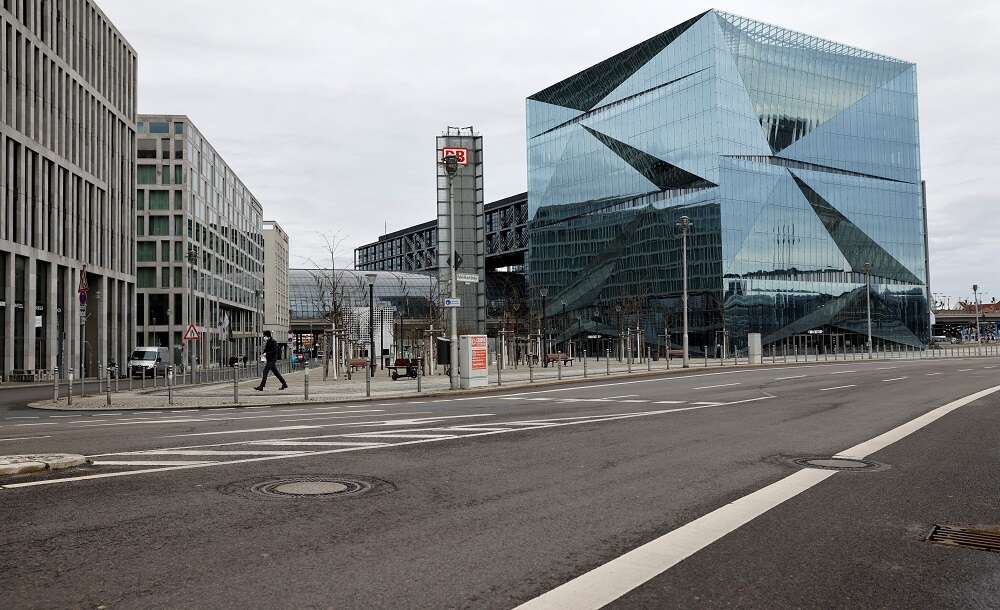
By Marta Orosz and Alexander Hübner
FRANKFURT/MUNICH (Reuters) – Hakle has been a German household name since 1928, but the Duesseldorf-based toilet paper manufacturer said all it took was this summer’s gas price shock to drive it into insolvency.
Energy-intensive firms such as Hakle were particularly vulnerable after Russian gas supply cuts to Europe, which Moscow has blamed on Western sanctions following its invasion of Ukraine in February.
“In a very short time, electricity and gas prices have exploded to such an extent that of course they cannot be passed on to our customers so quickly,” Karen Jung, the company’s head of marketing, told Reuters.
The number of insolvencies like Hakle’s has jumped since August, stirring fears that a wave of bankruptcies could engulf Europe’s largest economy as another consequence of Russia’s energy standoff with Europe.
The companies’ plight is heaping more pressure on Chancellor Olaf Scholz’s three-way coalition, which is trying to protect Germans from soaring gas bills, decades-high inflation plus the threats of recession and winter fuel shortages.
The annual energy price increase in Germany in August on average was 139%, latest producer price data showed this week.
Economy Minister Robert Habeck already sparked a backlash this month when he played down the issue in a TV interview, saying that companies would not necessarily go insolvent even if hard-up customers no longer bought their products.
Invoking the English football chant “you’ll never walk alone” as a slogan, Scholz’s government is spending tens of billions of euros on relief measures and has bailed out Germany’s biggest Russian gas importer Uniper.
But Hakle wanted more protection for so-called Mittelstand companies like itself, the medium-sized, often family-owned firms that are the engine of the German economy.
“It’s of course important to watch over the very big, systemic companies and find solutions for them,” Jung said.
“But it’s also the case that a very large part of jobs in Germany are down to the Mittelstand. And here we really need solutions, so that the Mittelstand still has a future here in Germany.”
Responding to such concerns, Habeck has promised more support for smaller companies, while Justice Minister Marco Buschmann plans to loosen insolvency rules to help firms buckling under energy costs.
NO SEDATIVES
Some 718 German entities became insolvent in August, a 26% jump over the previous year, according to the IWH economic institute. It expects that figure to stay at around 25% in September and climb to 33% in October.
“After a long period of low insolvency numbers, a trend reversal has now set in,” says Steffen Mueller of the IWH.
Germany’s BDI business association has warned of a “massive recession”. In a BDI survey of 593 businesses, more than a third said their existence was threatened by higher energy prices, up from 23% in February.
Industry group VKU has also joined the chorus of concern, warning that local utilities faced insolvency due to high energy prices and possible defaults from their customers.
The head of the German Chemicals Industry Association VCI on Tuesday said rising energy prices were a “huge alarm call” for Germany as a place to do business.
“The step from the world’s leading industrial nation to the industrial museum has never been so small,” Wolfgang Grosse Entrup told Reuters.
A survey by leading credit institutions in August suggested non-performing loans in Germany would rise to 37.6 billion euros ($37.7 billion) next year from 31.9 billion in 2022.
“Our corporate customers did not experience a wave of bankruptcies during the pandemic,” Helmut Schleweis, President of the German Savings Banks Association, told a banking conference on Sept 8. “Today, however, this can no longer be ruled out, only the scope cannot yet be quantified.”
Christoph Schalast, a professor at the Frankfurt School of Finance and Management, said there was no significant increase in NPLs (non-performing loans) during the pandemic, when government support programmes helped companies.
“But now it looks very different. There are other factors such as inflation, disrupted supply chains, the war of aggression against Ukraine and interest rate hikes,” he said.
Some industry experts are warning against drawing the wrong conclusions from the rising insolvency figures.
They may look bad now because insolvency numbers were artificially depressed during the pandemic in 2020-2021 when the government propped up ailing firms with state aid and suspended legislation obliging them to file for insolvency.
Also, insolvency rates have been lower than in the recent past. There were just under 14,000 insolvencies in 2021, less than half the rate of 32,687 seen during the global financial crisis in 2009 or 39,320 seen in 2003, based on government data.
Though non-performing loans are expected to rise, industry experts say the mood in the financial sector is still relatively sanguine.
“Banks have now clearly picked up the alarm signal, nevertheless they’re sitting in a very comfortable position,” Juergen Sonder, President of the Federal Association of Loan Purchase and Servicing, told Reuters.
“They’re counting on the state to also intervene this time to prevent a wave of bankruptcies.”
Restructuring expert Lucas Floether told Reuters that the government should not try to protect companies by throwing taxpayer money at them if their business models were fundamentally unsound.
“The energy crisis is calling into question the business model of many companies,” he said in an interview.
He welcomed Buschmann’s initiative to relax insolvency rules but added that suspending them outright again would be a “serious mistake”.
“It would just be a sedative, and it won’t help,” he said. “Competition must take hold at some point.”
($1 = 0.9965 euros)
(Reporting by Marta Orosz, Alexander Hübner, Patricia Weiss, Petra Wischgoll; writing by Matthias Williams. Editing by Jane Merriman)


